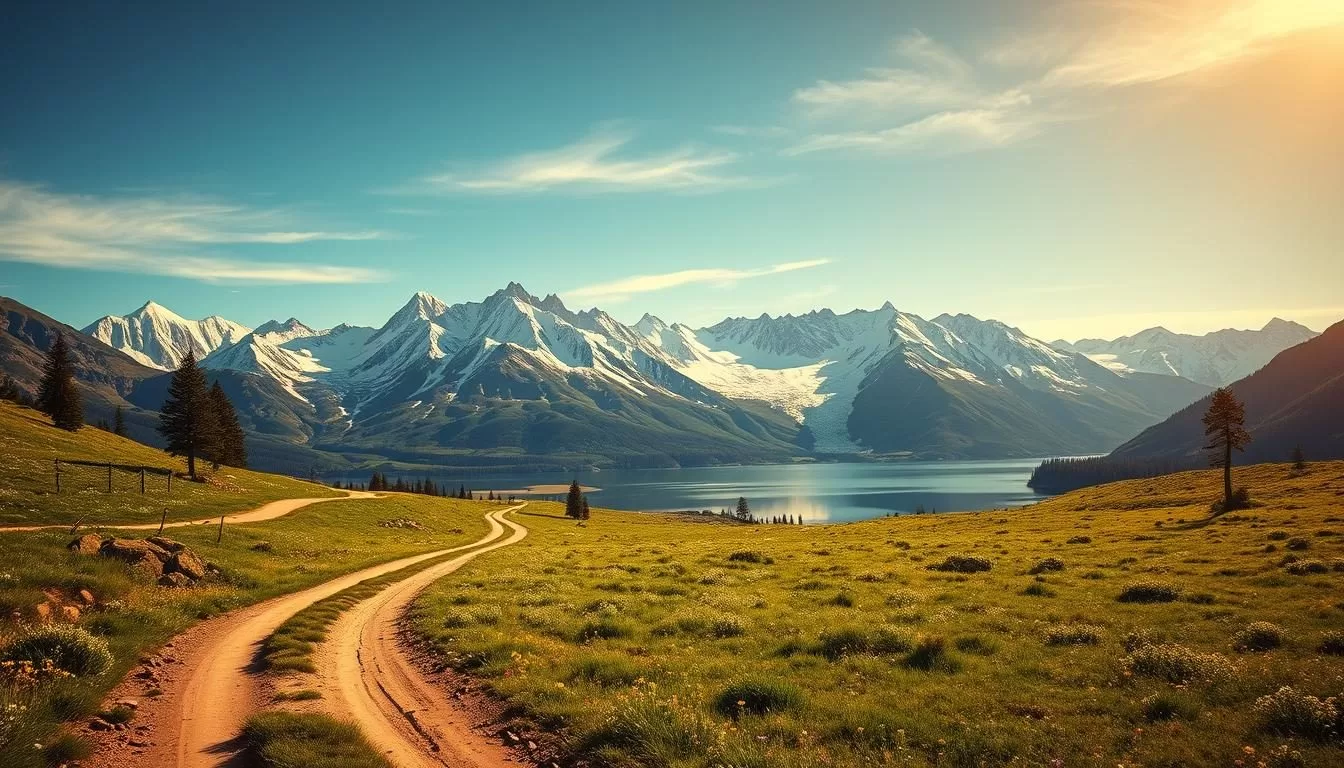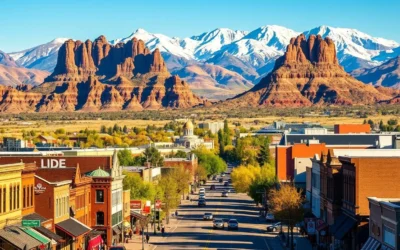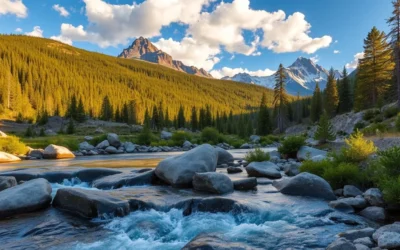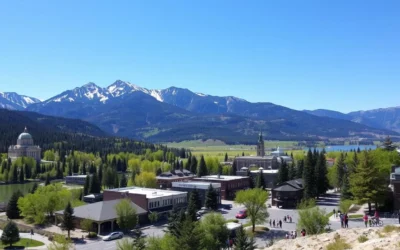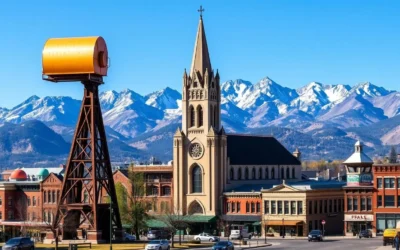✓ Accommodations✓ Flights✓ Rental Cars✓ Tours & Activities
Planning a trip to Montana can be a thrilling experience, with the state’s diverse landscapes and activities offering something for every kind of traveler. Understanding the weather patterns and seasons is crucial to making the most of your visit.
The state’s climate varies dramatically throughout the year, from the snow-covered winter landscapes to the vibrant summer scenes teeming with wildlife. To ensure your trip is weather-savvy, it’s essential to choose the right time to visit based on your interests and preferences.
This guide will help you navigate the different seasons and their unique offerings, from summer hiking to winter skiing, so you can plan a trip that meets your expectations and makes the most of your time in Montana.
Understanding Montana’s Diverse Climate
Understanding the diverse climate of Montana is crucial for planning a trip that suits your weather preferences. The state’s varied geography plays a significant role in shaping its climate, with different regions experiencing different weather conditions.
Geographic Variations: Mountains vs. Plains
Montana’s climate varies dramatically across the state, with the western mountainous regions experiencing different weather patterns than the eastern plains. This creates distinct microclimates that travelers should understand before planning their trip. The western portion is generally cooler and wetter, while the eastern part is drier and experiences more extreme temperature fluctuations.
The Continental Divide Effect
The Continental Divide acts as a natural weather barrier, causing the western portion of Montana to receive more precipitation. In contrast, the eastern side remains drier and experiences more extreme temperature fluctuations. This divide significantly impacts the climate and conditions on either side, making it essential to consider when planning your trip time.
| Region | Climate Characteristics | Air Quality Considerations |
|---|---|---|
| Western Montana | Cooler, wetter, mountainous | Generally good, but can be affected by wildfires during summer |
| Eastern Montana | Drier, more extreme temperature fluctuations | Generally good, with less risk from wildfires |
As you plan your trip, consider the air quality, especially during summer months when wildfires can impact visibility and breathing conditions in western Montana.
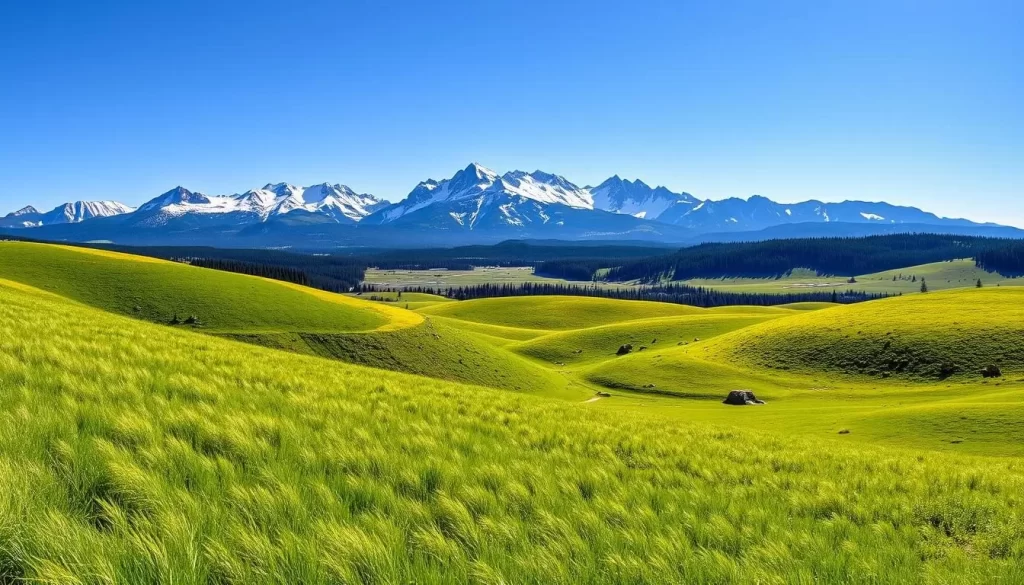
Summer in Montana: Peak Season Adventures
Summer transforms Montana into a vibrant playground for outdoor enthusiasts. The state’s natural beauty is on full display, with warm weather and long days providing ideal conditions for a wide range of activities.
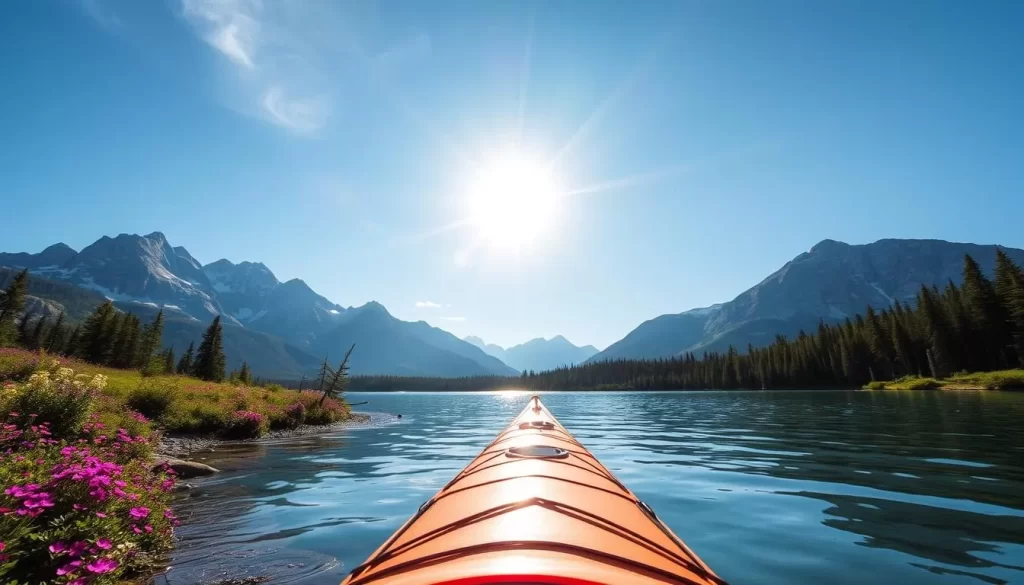
Weather Patterns: June to August
Summer in Montana is characterized by warm temperatures and abundant sunshine. Average temperatures range from 60°F in June to 68°F in July, with highs often reaching the 80s. Be prepared for afternoon thunderstorms, especially in early summer, and potential wildfires later in the season.
Popular Summer Activities
Montana offers a variety of summer activities, including hiking, fishing, and wildlife viewing. You can explore the numerous trails in national parks, enjoy water sports on the beautiful lakes and rivers, or go horseback riding through the scenic countryside.
What to Pack for Summer Visits
When visiting Montana in the summer, pack lightweight, breathable clothing and layers for cool evenings. Don’t forget rain gear, sun protection, and sturdy hiking boots. If you plan to hike in bear country, consider bringing bear spray.
Fall in Montana: Colors and Comfort
As the summer fades, Montana transforms into a kaleidoscope of colors during the fall season. This transformation brings a unique blend of comfort and adventure, making it an ideal time to visit.
Weather Conditions: September to November
During the fall, Montana experiences cooler and windier conditions, especially at higher elevations. Average highs are around 60 degrees F (15.5 degrees C), while nighttime temperatures can drop to 35 degrees F (2 degrees C) on average. The average temperatures by month are as follows:
| Month | Average Temperature | Highs | Lows |
|---|---|---|---|
| September | 56°F | 71°F | 43°F |
| October | 43°F | 57°F | 33°F |
| November | 31°F | 41°F | 23°F |
Fall Activities and Wildlife Viewing
Fall in Montana offers a range of activities, including hiking, biking, kayaking, fishing, and camping. The season also provides excellent wildlife viewing opportunities as animals prepare for winter. Elk begin their rut in September, bears increase their feeding activity, and migratory birds pass through the region.
- Scenic drives to appreciate the foliage
- Hiking on less-crowded trails
- Fishing in rivers teeming with active fish
- Hunting (with proper licenses)
- Photography opportunities in the golden light
Packing Essentials for Autumn Trips
When visiting Montana in the fall, it’s essential to pack warm, layerable clothing, a waterproof/windproof jacket, gloves, and a hat for mornings and evenings. Sturdy waterproof footwear and bear spray for hiking in remote areas are also recommended.
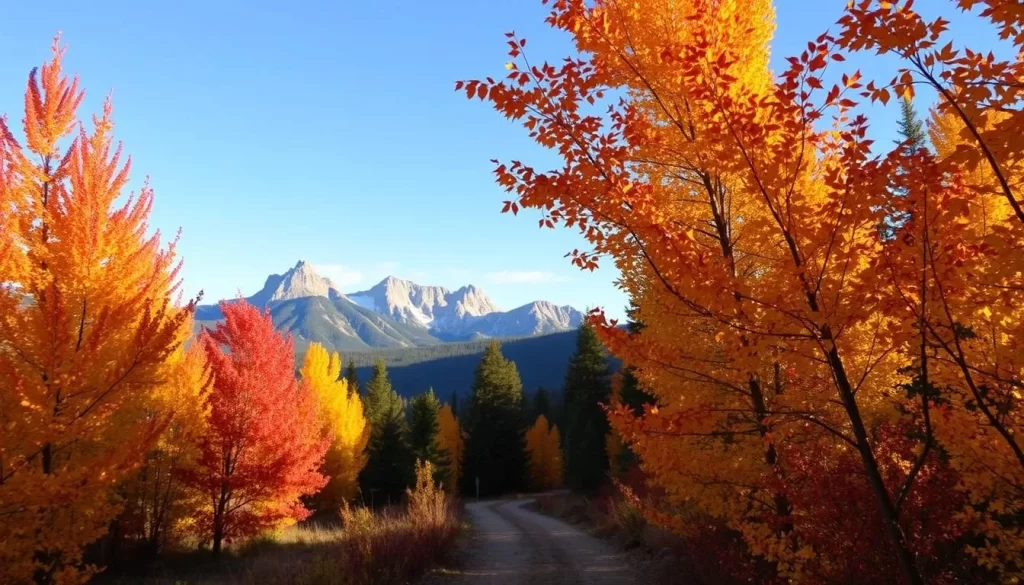
Winter in Montana: Snowy Wonderland
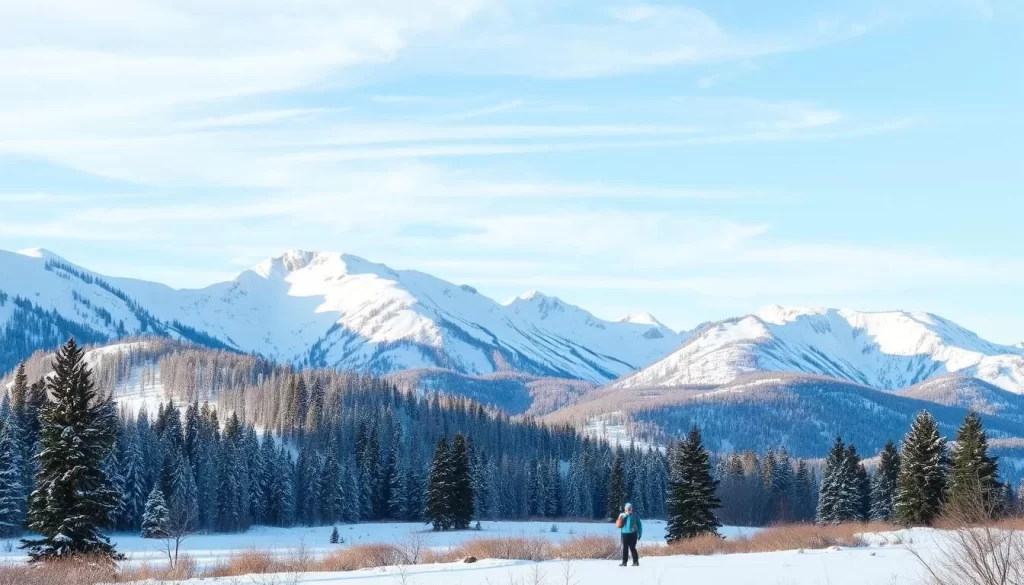
Experience the magic of Montana during the winter months, with its breathtaking scenery and range of cold-weather pursuits. The winter season can feel quite cold and long, but it brings a serene beauty to the state.
Weather Expectations: December to February
During the winter months, Montana’s temperatures average between 21-26°F, with January being the coldest month. You can expect approximately 8 to 10 hours of daylight, with early sunsets around 4:30-5:00 PM.
Winter Sports and Activities
Montana offers a variety of winter activities, including world-class skiing and snowboarding at resorts like Big Sky, snowmobiling on hundreds of miles of groomed trails, ice fishing, dog sledding, and snowshoeing through silent forests. The winter season offers a completely different perspective of Montana’s national parks, with Yellowstone’s geothermal features creating dramatic steam displays against the snowy backdrop.
Cold Weather Packing Guide
To prepare for your winter trip, pack insulated, waterproof boots, moisture-wicking base layers, insulating mid-layers, a heavy winter coat, waterproof snow pants, warm hat, insulated gloves, wool socks, and hand/foot warmers for extended outdoor activities.
Spring in Montana: Renewal and Wildflowers
During spring, Montana experiences a significant transformation, with the harsh winter conditions gradually giving way to a more temperate climate. This season of renewal brings about a series of changes that make it an attractive time to visit.
Weather Transitions: March to May
Spring in Montana is characterized by highly variable weather, with March remaining quite wintry, April showing noticeable warming, and May offering more consistently pleasant conditions. Average temperatures range from 34°F in March to 52°F in May.

Spring Outdoor Experiences
As the weather transitions, outdoor activities become more accessible. Spring offers excellent fishing opportunities as rivers swell with snowmelt, making trout more active. It’s also a great time for wildlife viewing as animals emerge with new offspring, and hiking trails begin to open up with fewer crowds than in the summer months.
What to Bring for Spring Adventures
To make the most of your spring adventures in Montana, be sure to pack waterproof footwear, layered clothing, and rain gear. Don’t forget traction devices for potentially icy trails and bear spray when hiking or camping in bear country.
Montana, United States: Best Months for a Weather-Savvy Trip
When planning your trip to Montana, understanding the best time to visit is crucial for a memorable experience. The state’s diverse climate and geography mean that different activities and attractions are available at different times of the year.
Optimal Times for National Park Visits
For visits to national parks like Glacier National Park, the optimal window is mid-July through mid-September. This period ensures that the iconic Going-to-the-Sun Road is fully open, and hiking trails are accessible. If you prefer fewer crowds, September is a good option, with pleasant conditions still prevailing.
Shoulder Seasons: The Hidden Sweet Spots
The shoulder seasons, which include late spring (May-June) and early fall (September-October), offer a balance of decent weather and fewer crowds. During these periods, you can enjoy wildflowers and rushing waterfalls in the spring, and golden aspens with active wildlife in the fall.
Considerations for Weather-Sensitive Travelers
If you’re sensitive to weather conditions, it’s essential to plan your visit accordingly. Montana’s weather can change rapidly, so those sensitive to heat should avoid July and August in eastern Montana. Conversely, if you’re concerned about cold, plan your visit during summer or focus on lower elevations during spring and fall. 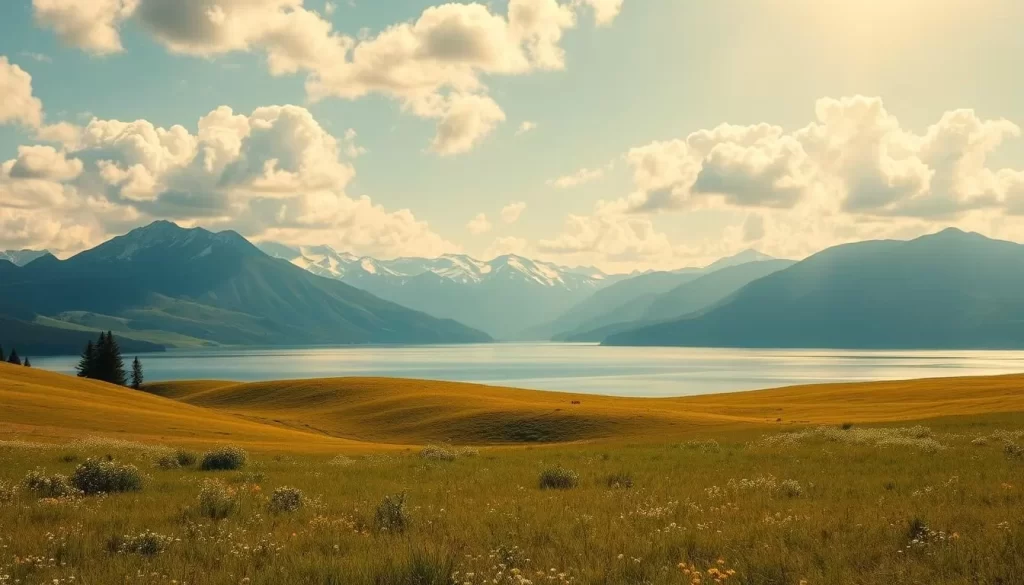
Travelers with flexibility in their schedule can benefit from Montana’s varying weather patterns. Adjusting plans based on current conditions allows you to maximize good-weather days for key activities. Additionally, if you’re visiting multiple parks, be aware that weather patterns vary significantly between them, such as between Glacier National Park and Yellowstone National Park.
Must-Visit Destinations Across Seasons
From national parks to natural wonders, Montana offers a diverse array of attractions that change with the seasons. The state’s varied landscape and climate ensure that there’s always something new to experience, regardless of the time of year you visit.
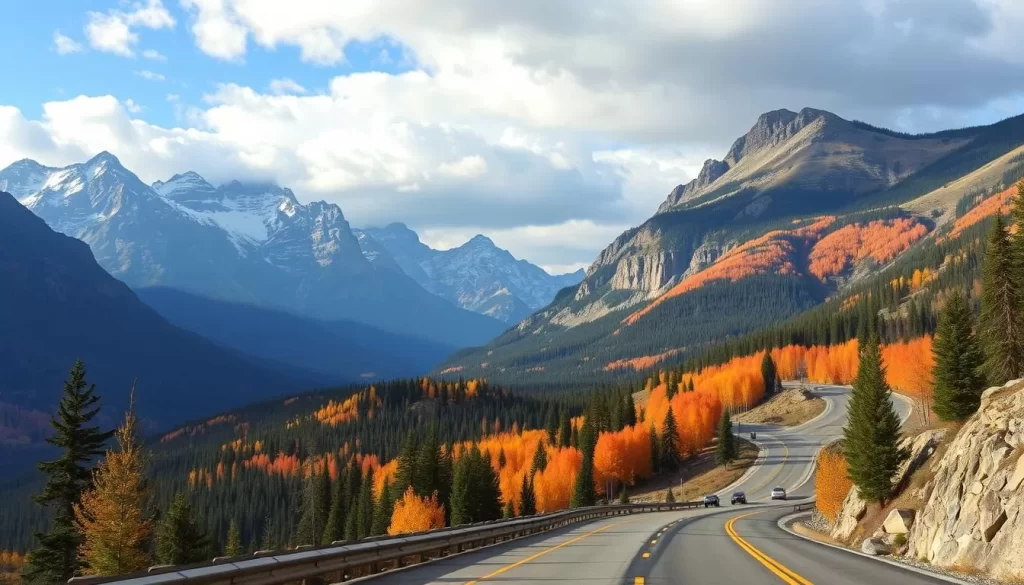
Glacier National Park: Seasonal Highlights
Glacier National Park offers distinct experiences across seasons. In the summer, you can drive the Going-to-the-Sun Road and hike high-country trails. In the fall, the park is ablaze with vibrant colors and wildlife activity. Winter transforms the landscape into a peaceful snow-covered retreat, while spring brings rushing waterfalls and emerging wildflowers.
Yellowstone National Park: Year-Round Appeal
Yellowstone National Park, partially located in Montana, maintains its appeal throughout the year. Each season highlights different aspects: summer for full park exploration, fall for elk rutting season and fewer crowds, winter for dramatic geothermal features against the snow, and spring for baby wildlife viewing opportunities.
Flathead Lake and Other Natural Wonders
Flathead Lake, the largest natural freshwater lake west of the Mississippi, offers water-based recreation in summer, stunning fall colors, ice fishing in winter, and peaceful shoreline exploration in spring. Montana’s charming towns like Whitefish, Bozeman, and Missoula serve as excellent base camps for seasonal exploration, offering unique cultural experiences and outdoor adventures.
Conclusion: Planning Your Weather-Perfect Montana Adventure
Montana’s charm lies in its ability to provide unique experiences throughout the year. Whether you’re seeking summer hiking adventures or winter skiing in Big Sky, the state’s diverse landscapes offer something special in every season. To make the most of your visit, consider the best time to visit Montana based on your preferences and activities. Pack layers for your trip, as Montana’s mountain environments can experience significant temperature swings. With a weather-savvy approach, your Big Sky Country adventure will exceed expectations in any season.
The above is subject to change.
Check back often to TRAVEL.COM for the latest travel tips and deals.
